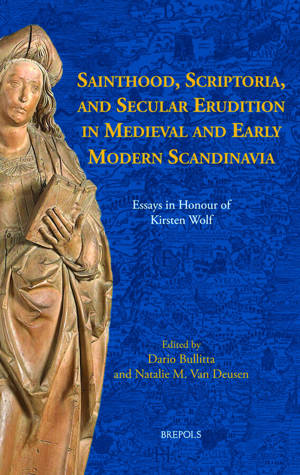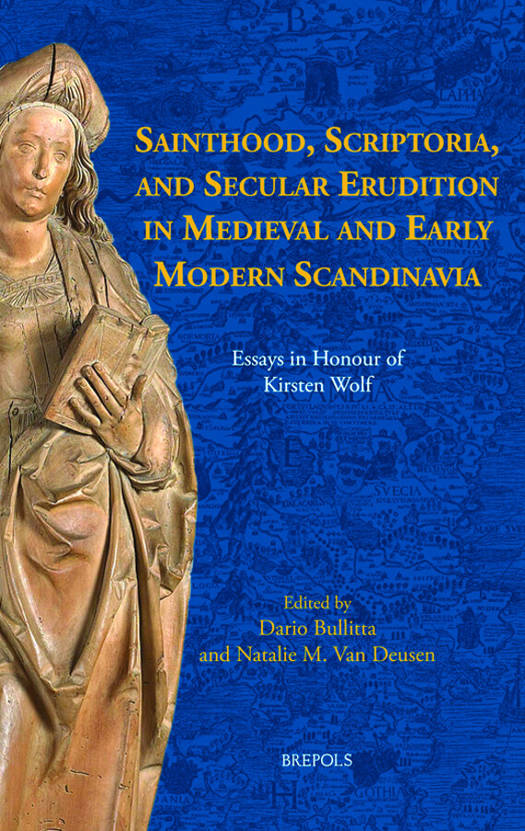
- Afhalen na 1 uur in een winkel met voorraad
- Gratis thuislevering in België vanaf € 30
- Ruim aanbod met 7 miljoen producten
- Afhalen na 1 uur in een winkel met voorraad
- Gratis thuislevering in België vanaf € 30
- Ruim aanbod met 7 miljoen producten
Zoeken
Sainthood, Scriptoria, and Secular Erudition in Medieval and Early Modern Scandinavia
Essays in Honour of Kirsten Wolf
Dario Bullitta
Hardcover | Engels
€ 116,60
+ 233 punten
Omschrijving
While medieval Iceland has long been celebrated and studied for its rich tradition of vernacular literature, in recent years attention has increasingly been paid to other areas of Old Norse-Icelandic scholarship, in particular the production of hagiographical and religious literature. At the same time, a similar renaissance has arisen in other fields, in particular Old Norse-Icelandic paleography, philology, and manuscript studies, thanks to the development of the so-called 'new philology', and its impact on our understanding of manuscripts. Central to these developments has been the scholarship of Kristen Wolf, one of the foremost authorities in the fields of Old Norse-Icelandic hagiography, biblical literature, paleography, codicology, textual criticism, and lexicography, who is the honorand of this volume. Taking Prof. Wolf's own research interests as its inspiration, this volume takes an unprecedented interdisciplinary approach to the theme of Sainthood, Scriptoria, and Secular Erudition in Medieval and Early Modern Scandinavia in order both to celebrate Wolf's profound career, and to illustrate the many ways in which these seemingly different fields overlap and converse with each other in important and productive ways. From sculpture to sagas, and from skaldic verse to textual editions and the translation of hitherto unpublished works, the contributions gathered here offer new and important insights into our knowledge of medieval and early modern Scandinavian literature, history, and culture.
Specificaties
Betrokkenen
- Auteur(s):
- Uitgeverij:
Inhoud
- Aantal bladzijden:
- 466
- Taal:
- Engels
Eigenschappen
- Productcode (EAN):
- 9782503595481
- Verschijningsdatum:
- 14/07/2022
- Uitvoering:
- Hardcover
- Formaat:
- Genaaid
- Afmetingen:
- 155 mm x 234 mm
- Gewicht:
- 5075 g

Alleen bij Standaard Boekhandel
+ 233 punten op je klantenkaart van Standaard Boekhandel
Beoordelingen
We publiceren alleen reviews die voldoen aan de voorwaarden voor reviews. Bekijk onze voorwaarden voor reviews.








